Results 6,251 to 6,260 of 12094
Thread: Anandtech News
-
08-30-16, 08:07 AM #6251
Anandtech: Intel Announces 7th Gen Kaby Lake: 14nm PLUS, Six Notebook SKUs, Desktop c
When Intel first announced the shift from the dual-stage ‘Tick-Tock’ methodology that had driven their core CPU design teams for over a decade into the three-way ‘Process, Architecture, Optimization’ paradigm, there were questions as to how much of the final stage, the Optimization, would actually change the way CPUs were presented or offer upgrades in performance. At the time, ‘Kaby Lake’ as the name for Intel’s third crack at their 14nm process was well known, but users wondered if it was just another Devil’s Canyon (better overclocking) or a full on CPU launch. Well the answer is the latter, and the launch is staggered between today and January. Roll on Kaby Lake. Is that Kah-bee Lake, or Kay-bee Lake?
More...
-
-
08-31-16, 04:24 AM #6253
Anandtech: Acer Predator 21 X: Notebook with Curved Display, Kaby Lake and GeForce GT
As part of the IFA event this week in Berlin, Acer is announcing its Predator 21 X, the industry’s first desktop replacement notebook with a curved display. The laptop is aimed at gamers without budget constraints and packs high-end gaming hardware, such as Intel’s 7th Generation Kaby Lake processors, two NVIDIA’s GeForce GTX 1080 graphics cards in SLI and even a mechanical keyboard. The system can hardly be called a mobile computer because it is very large and heavy, but it still comes in clamshell form-factor and can be transported relatively easily. One of the key features is the display.
The Acer Predator 21 X will be the company’s new flagship gaming notebook, which will feature a plethora of technologies that we have not seen in laptops so far. The machine will be based on Intel’s upcoming 7th generation Core processors codenamed Kaby Lake. Acer does not reveal exact CPU models or their specifications, but given the positioning of the notebook, expect the company to use chips designed for gaming PCs (45W+, one would imagine). For graphics, Acer plans to offer up to two NVIDIA GeForce GTX 1080 GPUs, but other options will probably be available as well. The company does not specify storage capabilities of the Predator 21 X, but chassis designed to fit a 21” display panel can integrate a number of M.2 and 2.5” drives.
To cool down the CPU as well as up to two GPUs, Acer uses a specially designed cooling system with five fans and multiple heat-pipes. Three out of five fans are ultra-thin and are made of metal (the manufacturer calls them AeroBlade).
While the performance of the Predator 21 X promises to be high, the key feature of the notebook is its 21” curved IPS display panel with 2560 × 1080 resolution and NVIDIA’s G-Sync dynamic refresh rate technology. In addition to curvature, Acer also added Tobii infrared eye-tracking sensors to the display, which opens up different user experiences in games that support the appropriate tech. To further appeal to gamers, the DTR laptop comes with four integrated speakers and two built-in subwoofers (the audio sub-system carries the SoundPound 4.2+ brand name).
For input, the Acer Predator 21 X uses a mechanical keyboard with Cherry MX switches (just like MSI’s GT80 Titan) with five programmable buttons. The numeric keypad does not feature mechanical switches, but a good news is that it can be flipped and turned into a touchpad (a device that some DTR gaming laptops lack).
For connectivity, the Predator 21 X has one GbE port as well as a 2T2R 802.11ac + Bluetooth Wi-Fi module with two physical antennae on the rear side. In addition, the machine sports two USB Type-A ports, at least one USB Type-C receptacle, audio in/out as well as three display outputs (two DP, one HDMI).
Since the Acer Predator 21 X seems to be based on Intel’s yet unannounced 45W+ 7th generation Core chips for gaming machines, it will not be available for purchase for at least several months from now. For this reason, Acer does not unwrap all of its specifications just yet because the spec is hardly final at this time. That said, it is impossible to even estimate an approximate price of the machine. Yet, it is safe to say that it will cost more than average gaming laptops not only because of two high-end graphics cards but also due to the unique display and form-factor.
Gallery: Acer Predator 21 X: Notebook with Curved Display, 7th Gen Intel Core CPU and GeForce GTX 1080 in SLI





More...
-
08-31-16, 04:24 AM #6254
Anandtech: Acer Announces new Swift brand of Ultrathin Notebooks with Kaby Lake SoCs
As we reported on the Kaby Lake launch last week as Intel’s newest generation of processors focusing on thin and light notebooks as well as convertables, tablets and mini-PCs, a number of Acer’s announcements today at IFA 2016 revolve around the new hardware. Today they are announcing a new line of ultrathin notebooks, called Swift. There will be four models, the Swift 1, Swift 3, Swift 5 and Swift 7, with the higher number representing the more premium product.
Gallery: Acer Swift 7




The Swift 7 is the flagship, designed to fit within a 1cm tall chassis (it comes at 9.98mm for good measure). In that z-height is a 1.1kg (2.48lbs) device sporting a 13.3-inch 1920x1080 IPS display, an all-aluminium unibody and a thin bezel. Acer is reporting up to nine hours of battery life with the Core i5-7300U, a 256GB SSD, and up to 8GB of memory (no mention if it is LPDDR3 or DDR4). Connectivity comes from a 2T2R 802.11ac with MU-MIMO, and the clamshell comes with two USB 3.1 Type-C ports (we’re not sure if Acer uses USB 3.1 Gen1 or Gen2 from the announcement, and they don’t specify). The Swift 7 will be available in October starting at $999.
Gallery: Acer Swift 5





The Swift 5 is more of an attack on the XPS 13, claiming to fit a 14-inch panel in a 13.3-inch frame with thin bezels. It comes in thicker than the Swift 7, at 14.58mm, but is proportionally less dense at 1.36 kg. With the extra size and weight, there’s a bigger battery and Acer is claiming up to 13 hours for this one. Similar to the Swift 7, the Swift 5 with have Kaby Lake, up to 8GB of memory, and a choice of 256GB or 512GB PCIe or SATA SSDs, depending on the region/vendor. The Swift 5 will also have a USB 3.1 Type-C, and options for a touch display and fingerprint reader. The Swift 5 will start at $749 from November.
Gallery: Acer Swift 3





The Swift 3 goes up the stack again, at 17.95mm and 1.5kg, but in a full 14-inch form factor this time using 720p or 1080p IPS displays, Skylake/Kaby Lake processors, up to 512GB/8GB and 2T2R 802.11ac with MU-MIMO. The key feature of the Swift 3 according to Acer is the optional backlit keyboard paired with the larger touchpad. Pricing starts at $499 from October.
Gallery: Acer Swift 1





Finally the Swift 1 is the budget offering, using a Pentium/Celeron with 32/64/128GB eMMC and a 14-inch 720p display. The design is premium-like, using a brushed-metal-like finish on the chassis but the idea is that a student can have 12 hours of battery life in a 1.6 kg device. The Swift 1 will start at $249 from November.
More...
-
08-31-16, 05:42 AM #6255
Anandtech: NVIDIA Releases 372.70 WHQL Game Ready Driver
It’s driver update time again. This time with a small list of fixes and a relatively large list of game ready titles. Though the list is a bit inflated with Deus Ex: Mankind divided sitting in a second time and Quantum break not seeing release for two more weeks, luck and users favor the prepared.
With this driver update continuing 370 driver branch, we start with a short list of fixes including issues in Windows 7 through 10 with Fallout 4 where enabling SSAO instead of HBAO+ would cause your Pipboy to go black and unreadable. Another issue resolved is high deferred Procedure Call latency in driver version 368.69 when upgrading to a GeForce GTX 1080, and the last fix listed only under Windows 10 was video corruption found when certain standard definition videos were up-scaled to full screen after a driver update.
The big reason most will be interested in this driver are the game ready updates. Key among these is World of Warcraft: Legion, the 6th and latest Expansion to what's still the most popular MMORPG out there. Following WoW: Legion we have the Battlefield 1 open beta starting, and NVIDIA has made sure that their GPU’s are ready as part of this week’s driver update. Meanwhile, Quantum Break, which saw release earlier this year on both the Xbox One and the Windows 10 store as a DX12 title, will be released on Steam with DX11 support, allowing more people to enjoy the game. Steam currently lists the release date as September 14th, making NVIDIA ready a head of the games (re) release. Lastly, Deus Ex: Mankind Divided is listed again under game ready this week. While I’m unsure of why it’s game ready again, NVIDIA does state in the release notes that Deus Ex’s 3D Vision profile has been upgraded from fair to excellent, for those still sporting the specs (read: spectacles) to play in 3D.
Anyone interested can download the updated drivers through GeForce Experience or on the NVIDIA driver download page. More information on this update and further issues can be found in the 372.70 release notes.
More...
-
08-31-16, 06:40 AM #6256
Anandtech: Qualcomm Details Snapdragon 821: Clocks, Efficiency, and IP
While Qualcomm already announced the Snapdragon 821, with the announcement details were rather sparse. Fortunately, today Qualcomm followed up with more details. Those that followed the announcement might recall that the only information disclosed at the time was that the CPU big cluster was now at 2.4 GHz. Today, we also get a GPU clock disclosure, with full details as seen below.
Interestingly enough, Qualcomm is also claiming a 5% bump in power efficiency, which sounds like it’s actually referring to platform power but could just be overall SoC efficiency. Other marketing bullet points include support for Snapdragon VR SDK which allows for Daydream support as well as dual phase detection. I’m not sure what this is unless this is referring to support for two separate phase detect auto focus systems similar to the Sony Alpha SLT-A99, but Qualcomm is claiming that this will improve autofocus speed compared to a traditional PDAF solution. The ISP also now supports extended ranges for laser AF, so systems like those seen in the LG G5 and HTC 10 will be able to better guide contrast AF for devices where PDAF isn’t available or can’t be used.Snapdragon 820 Snapdragon 821 CPU Perf Cluster 2x Kryo 2.15 GHz 2x Kryo 2.34 GHz CPU Power Cluster 2x Kryo 1.59 GHz 2x Kryo 2.19 GHz GPU Adreno 530 624 MHz Adreno 530 653 MHz
Qualcomm is also citing some interesting statistics for user experience with the Snapdragon 821, such as 10% faster boot speed, 10% faster app loads, and some BSP changes combined with faster processing to enable smoother scrolling and improved web browsing performance. The Snapdragon 821 SoC is already shipping in devices like the ASUS ZenFone 3, so we shouldn’t be far off from seeing major launches using this SoC. It's interesting to note here that last year we got details of Snapdragon 820 by September but we have yet to see what Qualcomm plans to launch for next year's flagships. It'll be interesting to see whether they stay with a custom CPU core or elect to go with an ARM Cortex big.LITTLE configuration similar to the Kirin 950.
More...
-
08-31-16, 07:59 AM #6257
Anandtech: The LG X Power Review
In the mid-range segment of the smartphone market you really have two types of products. The first are smartphones like the Moto G, which try to provide a good all-around experience. They aren't really exceptional in any respect, but the hope is that providing a decent experience in every respect will lead to a good overall user experience. The second type of device is one that really sells itself on a single feature. Whether it be a great camera, or a great display, the phone's identity is based on this one aspect. That doesn't necessarily mean that the other aspects of the phone are bad, but there may not be the same balance as there is with a good all-around performer.
The smartphone I'm reviewing today falls into that second camp. It's the LG X Power, a device that really sells itself on being a smartphone that will last far longer than any other. The LG X Power is just one device in LG's line of smartphones that all focus on being the best at a single thing, with some other devices in the line being named the LG X Style, LG X Mach, LG X Max, and LG X Screen. The LG X Power is the first device I've ever reviewed that really ties itself to a single feature, so read on for the full AnandTech review.
More...
-
-
08-31-16, 11:31 AM #6259
Anandtech: Hands On With the Samsung Gear S3
For a while now the smartwatch market has been developing in fits and starts. One of the more interesting developments in this space isn’t Android Wear and watchOS, but Tizen and webOS as both Samsung and LG have turned to their own homegrown OSes in cases where Android Wear wasn’t necessarily the best fit. It seems that OEMs have increasingly decided that it is necessary to control both hardware and software to better differentiate their offerings. In the case of LG we saw the Urbane LTE which necessitated webOS to enable cellular functionality, while Samsung in most cases has been pushing hard on Tizen in just about every case for their smartwatches rather than Android Wear.
With the Gear S3, Samsung is continuing to push ahead with their Tizen smartwatches, and this time the Gear S3 is intended as a sort of companion to the Gear S2 as the Gear S2 is closer to 40 or 42mm in size while the Gear S3 is a 46mm watch with a 360x360 circular AMOLED display which makes for 278 PPI. The display itself is covered by Gorrilla Glass SR+ which is said to improve scratch resistance although sand is probably still going to scratch the cover lens. The big jump in size basically rules out this watch for roughly half of the population, but the jump in size comes with a fairly significant bump in battery. Like the Gear S2, this is IP68 rated but I wouldn't actually try to use the device in a pool or shower as water damage isn't covered and the IP68 rating is basically only for distilled still water for a depth beyond 1m for at least 30 minutes, which really isn't enough to do much other than washing your hands with the watch still on your wrist.Samsung Gear S3 Classic Samsung Gear S3 Frontier SoC Exynos 7270 (2x ? @ 1.0GHz) RAM/NAND 768MB RAM, 4GB NAND Display 1.3" Circular 360x360 SAMOLED (278ppi) Dimensions 46 x 49 x 12.9mm (57g) 46 x 49 x 12.9mm (62g) Battery 380 mAh (1.46 WHr) OS Tizen Wearable Platform 2.3.2 Sensors Accelerometer, Gyroscope, Heart Rate, Ambient Light, Barometer Connectivity 802.11/b/g/n + BT 4.2, NFC, MST, GPS,GLONASS, A-GPS (LTE Only)
There are also extra features like a speaker, and the Frontier model offers an LTE variant. While the Gear S2 has an Exynos 3250, the Gear S3 also gets a bump up to the Exynos 7270 but both US and Korean PR on-site were unable to answer what differentiated the two as both are 28nm SoCs with dual core 1 GHz CPUs. I would guess that the 7270 gets a bump to Cortex A35 or A53 but is still built on 28nm planar HKMG as it seems that it is difficult to justify the increased costs associated with either 28FDS or 14LPP/14LPC when volumes are not necessarily guaranteed in the same way that a smartphone is. Battery life with 28nm planar is said to be somewhere in the 3-4 day range for this watch, so I’m not sure people will really care all that much anyways. This battery life claim is with the always-on display feature, which is an innovation carried over from the Galaxy S7 and Note7.
In addition to the SoC, size, speaker, and other changes, the Gear S3 adds the ability to use Samsung Pay via either MST or NFC. In both cases it was noted that the phone itself much generate the token, so if you lose connection to a paired phone Samsung Pay will only work for one transaction on the watch. Authentication is done by entering a PIN when you first put on the watch and Samsung Pay is automatically disabled if the watch is removed similar to how Apple Pay works on the Apple Watch. Charging is still wireless. WiFi support is going to be limited by the nature of the device but 802.11b/g/n are supported as well as Bluetooth 4.2.
If you already know how the Gear S watches work there’s not much else to talk about, but this is actually my first encounter with the Gear S line of watches in any serious capacity. The Gear S3 in person is large, and basically is the same size as the Moto 360 in its first generation which was fairly large, but those with larger arms won't have any issues. I haven’t really used a watch that big since then so wearing one again was a bit of a shock for me. The Gear S3 as a result feels a bit awkward and ungainly in size relative to the smaller Gear S2, but if your arms are larger than mine it should fit without issue. The design of the watch itself is impressive though, with delicate detailing that makes both the Frontier and Classic variants of the watch fit in with existing analog watch designs.
Other than this size issue the thickness of the watch is fairly respectable. The sheer size of the watch allows for the circular display to display a reasonable amount of information, and the rotating bezel remains a great way of navigating through the UI with a solid click between each detent. The side home and back buttons are a bit of a mystery when you first use them, but after pressing them once or twice you’re probably going to remember which is which. The watch is also fairly performant compared to something like the Apple Watch which is just slow by any measure. The Gear S3 also includes GPS and GLONASS support which is useful for things like turn by turn navigation and services like Uber. Where the Gear S3 allows for precise location setting and map zoom using the bezel, the Apple Watch version of this application is basically just a button with no real way to know what the pickup point is. I did notice some frame drops here and there but it’s hard to say if this was really the case without much closer examination and it’s likely that this isn’t final software.
Other than this, the only thing I was really cognizant of was the band design. Generally speaking these are generic 22mm bands, but Samsung by default seems to favor very thick bands for demonstration purposes, and due to the traditional band mechanisms I found the band to be somewhat uncomfortable compared to something like the Milanese Loop bands seen in the Apple Watch. Of course, due to the standardized 22mm design anything is possible for band design, but generally speaking this is something that OEMs should really be taking care of.
The Gear S3 comes in two designs, known as the Classic and Frontier, and of the two designs the Frontier will be the only one that will come with a cellular variant. Both will come with a Bluetooth variant designed to be paired to a phone. LTE variants will only be available through operators, which are currently AT&T, T-Mobile USA, and Verizon.
More...
-
08-31-16, 02:01 PM #6260
Anandtech: Lenovo Yoga Tab 3 Plus: Snapdragon 652, 10-Inch 2K Display, JBL Speakers a
Lenovo has introduced a new member to its Yoga Tab 3 product family this week at IFA. The new Yoga Tab 3 Plus tablet runs Google Android 6.0 and is aimed at demanding consumers. The novelty comes with a number of features previously only available on the Yoga Tab 3 Pro, including a higher-end octa-core SoC, a 2K 10” display, a lot of RAM, plenty of storage as well as Wi-Fi 802.11 ac connectivity. Surprisingly, the Yoga Tab 3 Plus will not be too expensive and will be available starting from $299.
When Lenovo introduced its Yoga Tab 3 family of products last year, the company drew a clear line between its mainstream Yoga Tab and considerably more advanced Yoga Tab 3 Pro tablets. The former were based on entry-level SoCs and were equipped with relatively low-res screens and limited amount of DRAM/NAND, whereas the latter were powered by Intel’s Atom SoC, were equipped with 2560×1600 displays and featured considerably better specs in general, but at a much higher price ($499/$599 for Wi-Fi/Wi-Fi+LTE model). Today, the Yoga Tab 3 closes the gap between the two product lines and attempts to wed the best of both: affordable price and high-end specs.
The Yoga Tab 3 Plus is based on the Qualcomm Snapdragon 652 SoC (4×A72 1.8 GHz, 4×A53 1.4 GHz, Qualcomm Adreno 510 graphics) and comes equipped with 3 GB of LPDDR3 DRAM as well as 32 GB of NAND flash storage (it also has a microSD card slot). The tablet uses USB Type-C (operates in USB 2.0 mode) connector for charging and connectivity and also supports WiFi 802.11 a/b/g/n/ac, Bluetooth 4.0 and LTE (optional) wireless technologies.
Lenovo positions its Yoga Tab 3 Plus tablet for those, who want to have enhanced multimedia experience on-the-go, which is why its 10-point multitouch 10.1” WQXGA (2560×1600) IPS display comes with Technicolor’s color enhance software technology. In addition, the device is equipped with four front-facing speakers (made by JBL) and supports Dolby's Atmos 3D surround sound processing. Now, unlike the Yoga Tab 3 Pro, the Tab 3 Plus does not feature a pico projector, but just like the aforementioned model, it has two cameras.Lenovo Yoga Tab 3 Family Model Yoga Tab 3 8” Yoga Tab 3 10" Yoga Tab 3 Pro 10” Yoga Tab 3 Plus 10” SoC Snapdragon 212
4×Cortex-A7 at 1.3GHz
Adreno 304 graphicsIntel Atom x5-Z8500
Quad core, 2.24GHzSnapdragon 652
4×Cortex-A72 at 1.8GHz
4×Cortex-A53 at 1.4 GHz
Adreno 510 graphicsRAM, NAND 1GB, 16GB NAND + MicroSD 2GB RAM, 16/32GB
NAND + MicroSD3GB RAM, 32GB
NAND + MicroSDDisplay 8" 1280x800 IPS LCD 10.1" 1280x800 IPS LCD 10.1" 2560x1600 IPS LCD
299 ppi, 70% Color GamutDimensions 210 x 146 x 3 to 7mm 253 x 185 x 3.5 to 9.5mm
655g179 x 247 x 4.6mm at thinnest point, 665g 179 x 247 x 4.68mm at thinnest point, 637-644g Camera 8MP Rotatable Camera 13MP Rear-facing
5MP Front-facingBattery 6200mAh (23.56Wh) 8700mAh (33.06Wh) 10200mAh (38.76Wh) 9300mAh OS Android 5.1 Lollipop Android 5.0 Lollipop Android 5.1 Lollipop Android 6.0 Connectivity 802.11b/g/n + BT 4.0, microUSB 2.0, Optional LTE SKU 2x2 802.11a/b/g/n/ac + BT 4.0,
microUSB 2.0, Optional LTE2x2 802.11a/b/g/n/ac + BT 4.0,
USB-C, Optional LTE
Battery capacity of the novelty is 9300 mAh and Lenovo claims that the Yoga Tab 3 Plus will last up to 18 hours on its battery. As it turns out, slightly lower battery capacity of the Yoga Tab 3 Plus compared to the Yoga Tab 3 Pro is offset by better energy efficiency of its SoC, which is why it promises to deliver similar battery life. Besides long battery life, the Yoga Tab 3 Plus also inherited premium chassis featuring metal, plastic and leather from the Pro model.
Lenovo will start shipments of its Yoga Tab 3 Plus this October. The MSRP for the Wi-Fi-only model will be $299, but the recommended price of the LTE SKU is currently unknown.
Gallery: Lenovo Yoga Tab 3 Plus: Snapdragon 652, 10-Inch 2K Display, JBL Speakers and USB-C





More...
Thread Information
Users Browsing this Thread
There are currently 10 users browsing this thread. (0 members and 10 guests)





 Quote
Quote
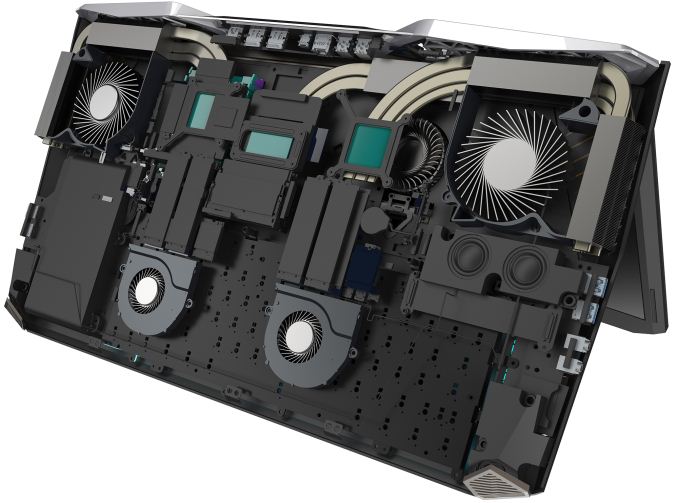
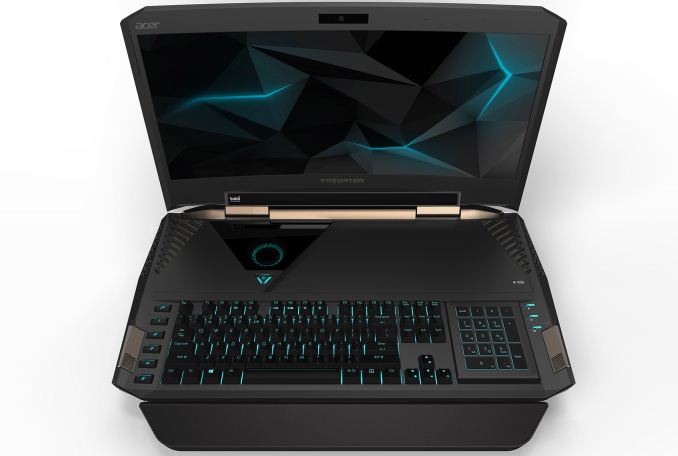

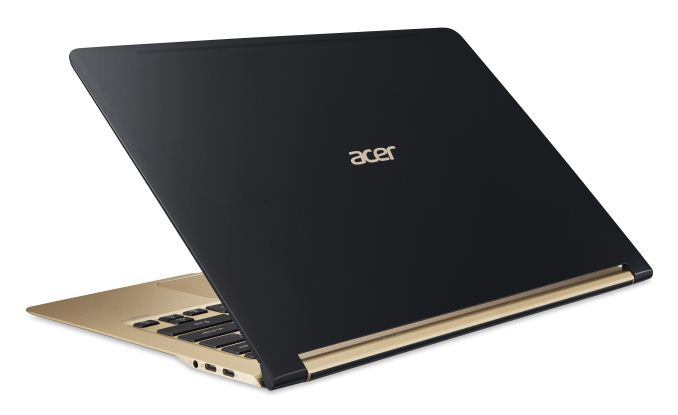
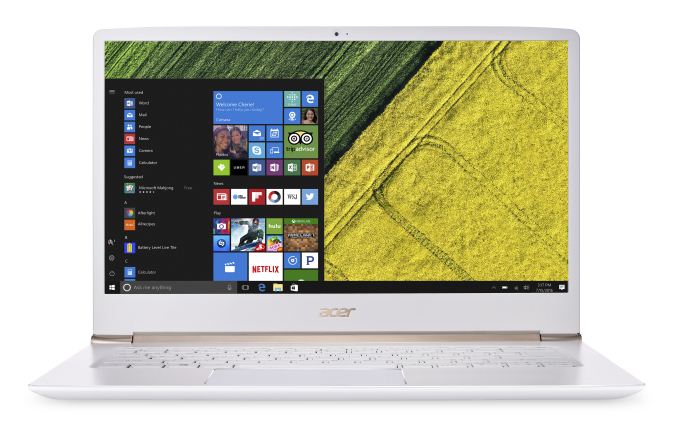
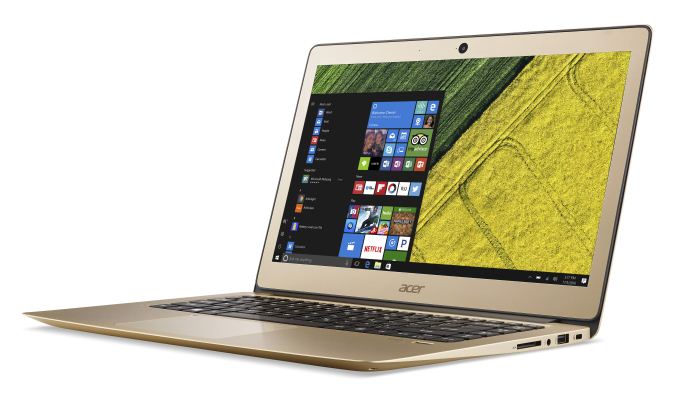
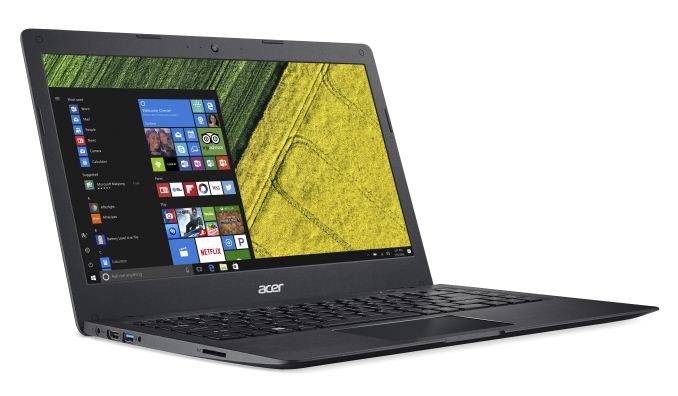


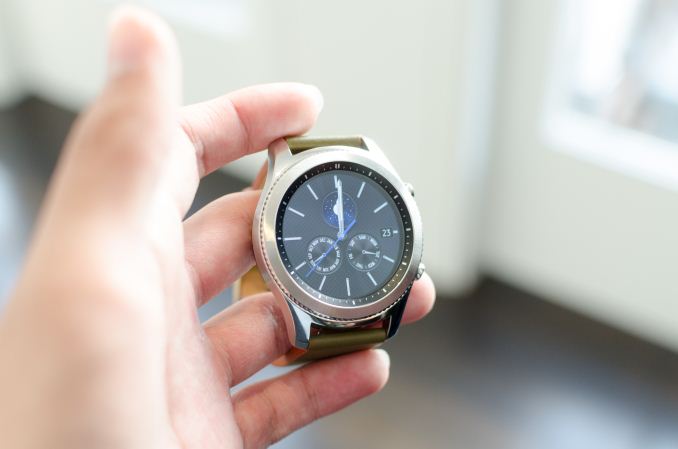
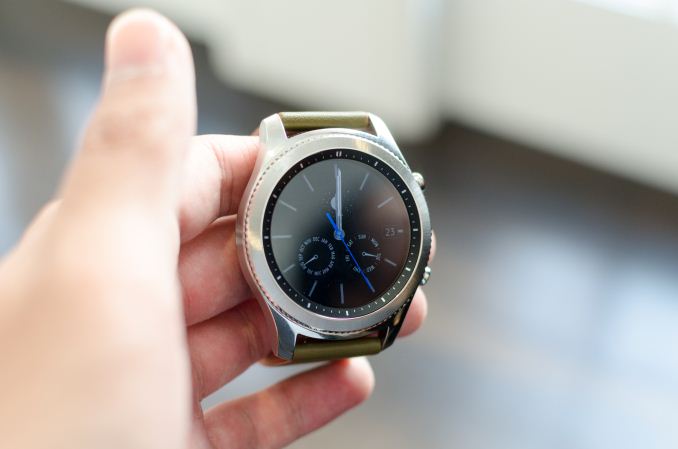

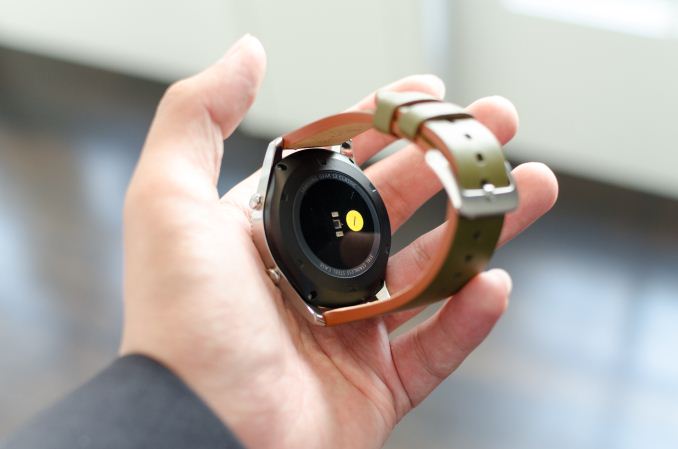

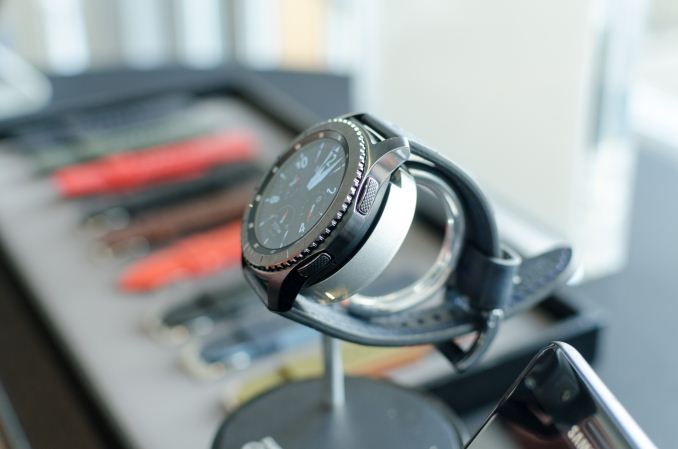
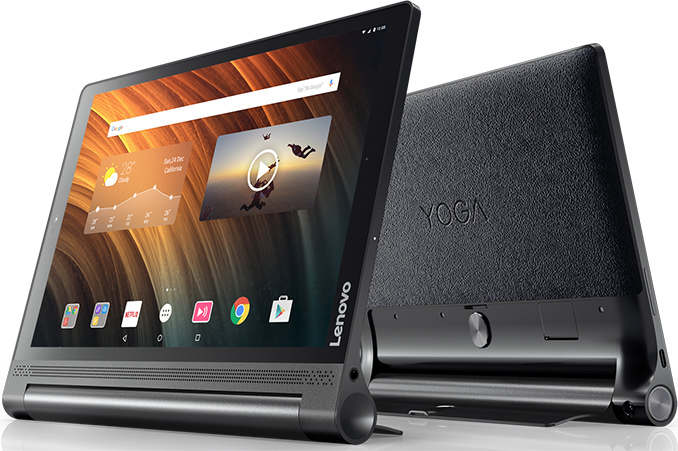
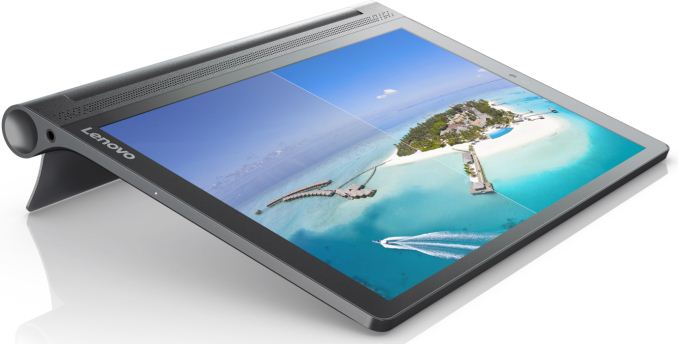
















Bookmarks